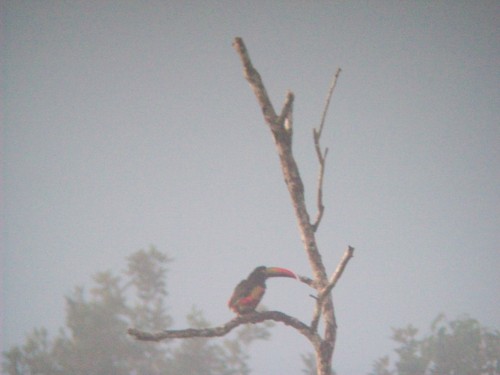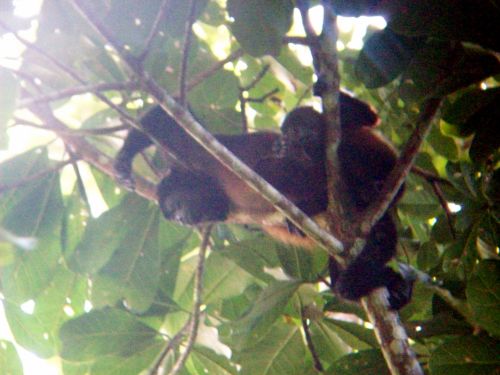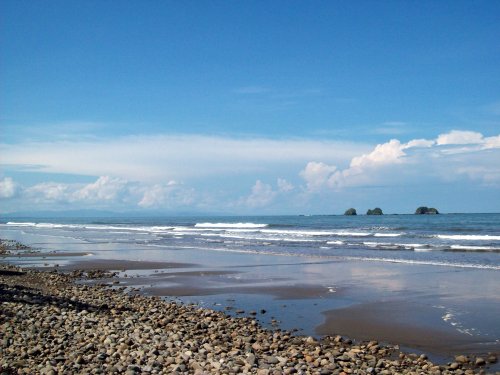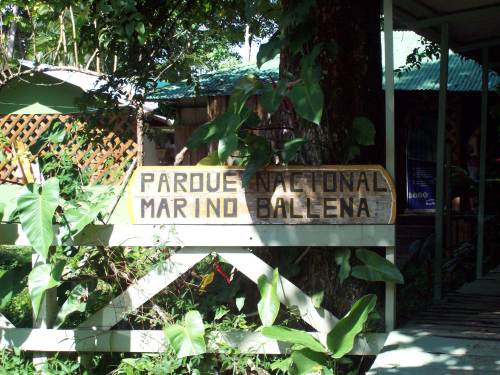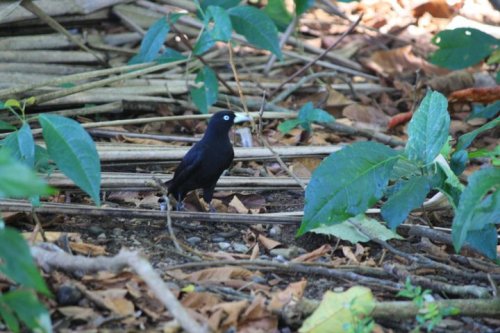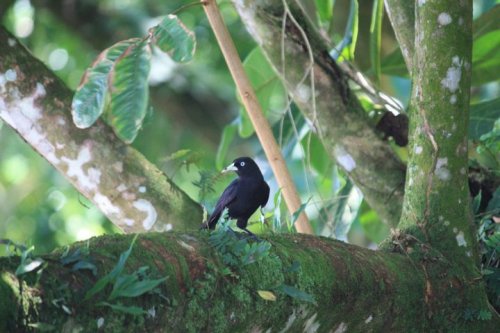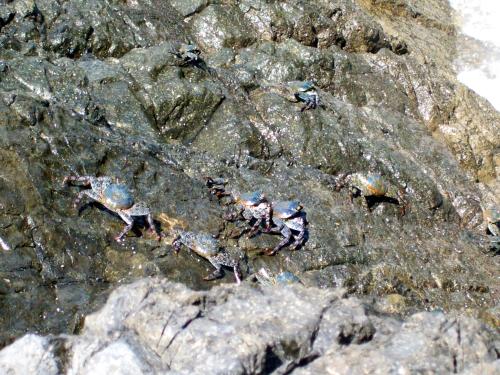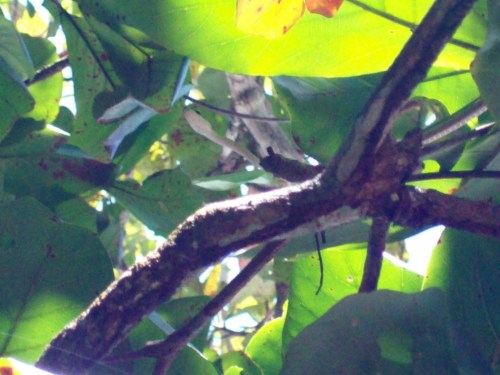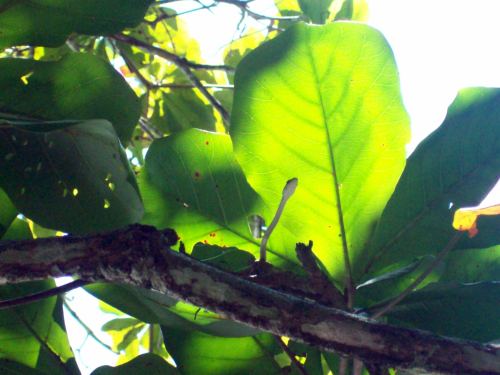Birdwatching today is a huge success. Any doubts about my aracari sighting yesterday are placated as I see two more today. They appeared to be a pair. Ricardo claims that the aracaris stir up the other birds. Perhaps he is right, because I also see another Bananaquit, a Dusky-capped Flycatcher, which I identified by its color, crest, and lack of visible wing ba rs, and a Red-legged Honeycreeper, whose reddish or pink legs pointed me in correct direction for identification.
After breakfast, we head to Playa Ballena. This is a relatively small beach and a national park. Immediately upon driving into the parking lot, we see howler monkeys. the howlers found here are the Golden-mantled Howler Monkey. The males have a dark gold collar of fur. They lie around lazily as howlers often do. Their characteristic, booming vocalizations are not heard. We see some males, females, and two babies. The latter are the most active. But, perhaps someone should provide them with more instruction, as Ricardo mentions that most monkey autopsies (I smell a CSI spinoff) reveal broken bones from poorly executed jumps.
The beach is much nicer than the one in Dominical. There are no other people here besides us, so we can enjoy the waves and swim around. We have the beach all to ourselves. The blue green water rises and falls in a froth of bubbles resulting from the crashing waves breaking just offshore. The water is warm, so simply floating on ones back with the son on your face is a wonderful feeling, as you bob up and down on the waves.
After swimming, we begin our lesson. Ricardo points out an amarillon tree, which are natural to this area. They produce nuts which are known as beach almonds. The shells are hard to crack by any animal, save for the strong bills of macaws. The nearby coconut palms were planted, but their seeds can survive for long durations in the ocean, making them a very successful species here. Unfortunately, they do not hold the beach soil as well as the amarillon.
In the distance, we see several islands. There are three small ones to our left and one large one toward the right. These islands are classic sea bird nesting sites, because there are no predators, the birds can nest on the ground (their feet are adapted to paddling; not perching), and the sea breeze helps them hunt.
On our walk, we see breadfruit, which brings to mind Mutiny on the HMS Bounty, and Balsa wood, whose remarkably light wood feels hollow if rapped with your knuckles. We also spot crabs on a rock spot just a few feet off of the coast, as well as two Scarlet-rumped Cacique. They are generally insectivorous, but here, they seem to stare hungrily at hermit crabs scurrying from coconuts on the ground.
After lunch, we sit on the rocky beach, watching the waves. It is absolutely serene. The waves roll in, and as they go back out to sea, they pull pebbles with them, making a rumbling sound if the waves are not too close together.
Just before we leave, a long, thin, green snake falls on my legs. Matter of factually, I say, “Oh, look…a snake just fell.” Sarah, who was sitting next to me, responded with, “Wait…what?” followed by kicking. The snake, now agitated, slithers up closer to me. Now, the situation is a bit out of control, so I shake it off of me. Ricardo claims that it is a vine snake as it sends its head from branch to branch in the tree above us with great agility. It is not venomous. Had I known that, I may have grabbed it, but perhaps Sarah’s response was the safer one in that sudden situation.
Back at the base, I go for a hike. I learn about TFI’s money problems from Sarah, so we decide to try to get funding from the Student Association. We also see a female Blue-crowned Manakin. Admittedly, it is not a male, nor is it a lek, but an awesome find nonetheless. It was particularly astounding as she is very difficult to see due to her fantastic camouflaged green plumage. Perhaps the cryptic coloration of the female is another way to hide the nest. After the hike, we have further lectures on deforestation and go to sleep after a long day.
